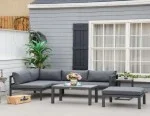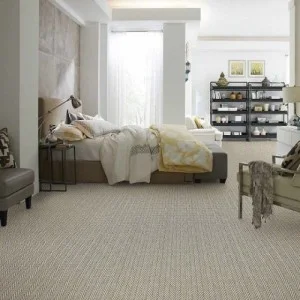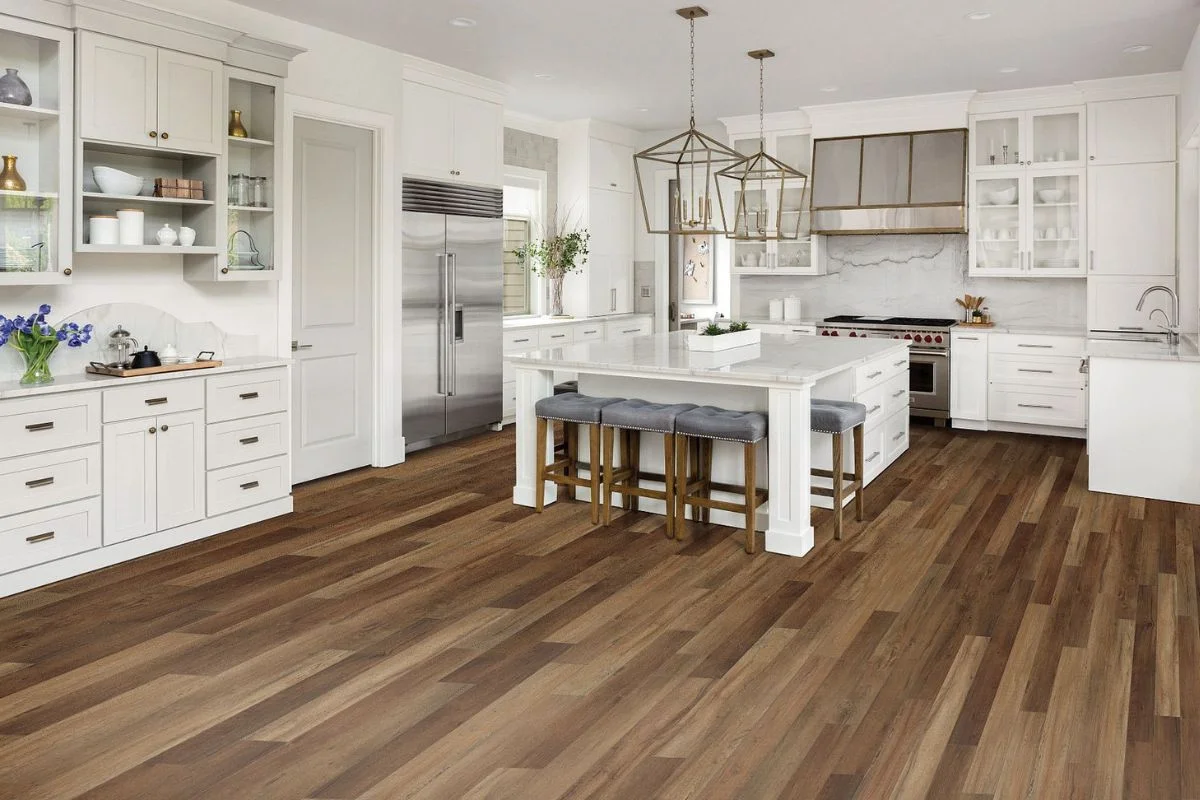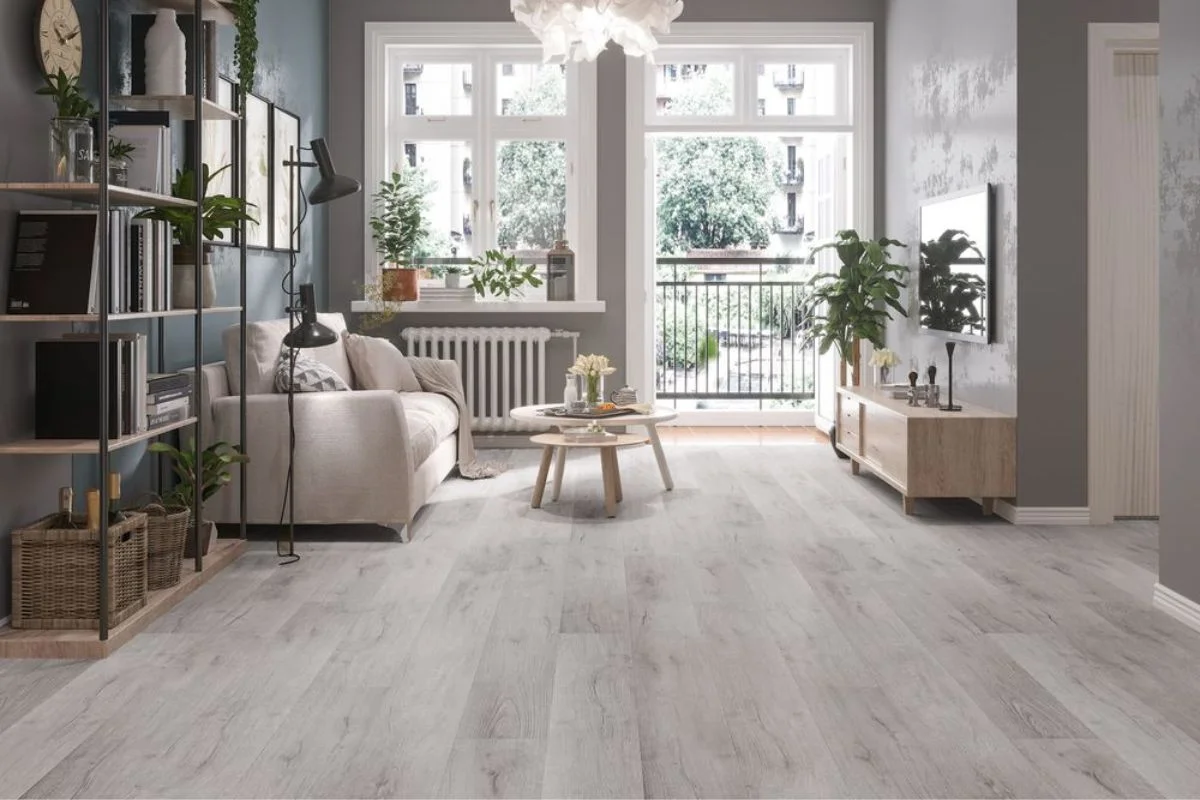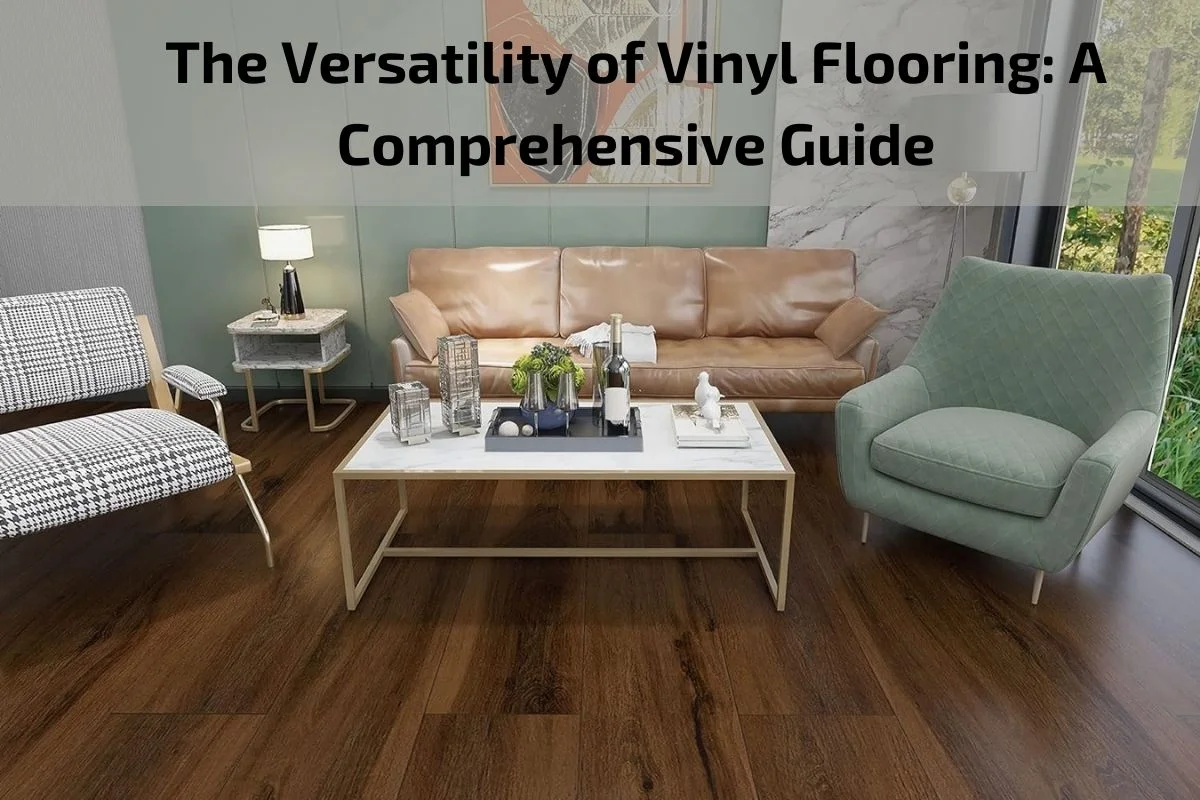 Vinyl flooring has emerged as a versatile and popular choice for homeowners seeking durability, affordability, and style in their flooring solutions. With its wide range of colors, patterns, and textures, vinyl flooring offers endless possibilities for transforming any space into a functional and visually appealing environment. In this comprehensive guide, we’ll explore the versatility of vinyl flooring and delve into its myriad benefits, applications, and design options. From its durability and water resistance to its ease of installation and low maintenance requirements, vinyl flooring has become a go-to option for homeowners, decorators, and designers alike. Join us as we journey through the world of vinyl flooring, uncovering its many features, innovations, and creative possibilities. Whether you’re renovating your home, updating a commercial space, or exploring flooring options for new construction, this guide will provide you with the insights and inspiration you need to make informed decisions and achieve stunning results with vinyl flooring.
Vinyl flooring has emerged as a versatile and popular choice for homeowners seeking durability, affordability, and style in their flooring solutions. With its wide range of colors, patterns, and textures, vinyl flooring offers endless possibilities for transforming any space into a functional and visually appealing environment. In this comprehensive guide, we’ll explore the versatility of vinyl flooring and delve into its myriad benefits, applications, and design options. From its durability and water resistance to its ease of installation and low maintenance requirements, vinyl flooring has become a go-to option for homeowners, decorators, and designers alike. Join us as we journey through the world of vinyl flooring, uncovering its many features, innovations, and creative possibilities. Whether you’re renovating your home, updating a commercial space, or exploring flooring options for new construction, this guide will provide you with the insights and inspiration you need to make informed decisions and achieve stunning results with vinyl flooring.Brief Overview of Vinyl Flooring as a Versatile and Popular Flooring Option:
Vinyl flooring has emerged as a leading choice for homeowners and commercial property owners alike, offering a versatile and practical solution for a wide range of spaces. This synthetic flooring material is celebrated for its durability, affordability, and extensive design options, making it a preferred choice in modern interior design. Vinyl flooring is composed of synthetic materials such as polyvinyl chloride (PVC) and plasticizers, which give it its resilience and flexibility. Available in various forms including sheets, planks, and tiles, vinyl flooring can mimic the look and feel of natural materials such as wood, stone, and ceramic tile, offering an affordable alternative without sacrificing aesthetics. One of the key features that sets vinyl flooring apart is its remarkable durability. Resistant to scratches, stains, and moisture, vinyl flooring is well-suited for high-traffic areas such as kitchens, bathrooms, and entryways. Its ability to withstand spills and water exposure makes it an ideal choice for areas prone to moisture, where traditional flooring options may be less suitable. Moreover, vinyl flooring is renowned for its ease of installation. Depending on the type of vinyl flooring chosen, installation methods may include glue-down, click-lock, or peel-and-stick options, catering to DIY enthusiasts and professional installers alike. This versatility in installation methods allows for quick and efficient updates to flooring surfaces, minimizing disruption and downtime. In terms of design, vinyl flooring offers a vast array of options to suit any aesthetic preference or decor style. From realistic wood-look planks to elegant stone-look tiles, vinyl flooring can replicate the natural beauty of traditional flooring materials with added benefits such as easy maintenance and affordability. Additionally, vinyl flooring comes in a spectrum of colors, patterns, and textures, allowing for endless customization and creative expression in interior design.Types of Vinyl Flooring
Vinyl flooring comes in several types, each offering unique features, benefits, and installation methods to suit different preferences and applications. Understanding the various types of vinyl flooring can help homeowners and designers make informed decisions when choosing the best option for their spaces. Here are the main types of vinyl flooring: Luxury Vinyl Plank (LVP):
- Luxury vinyl plank, also known as LVP, mimics the appearance of hardwood flooring with realistic wood grain patterns and textures.
- LVP is available in various plank sizes and widths, allowing for customization and flexibility in design.
- It is highly durable, water-resistant, and easy to maintain, making it suitable for high-traffic areas and moisture-prone spaces like kitchens and bathrooms.
- Installation methods for LVP typically include click-lock or glue-down options, providing versatility and ease of installation.
- Luxury vinyl tile, or LVT, replicates the look and texture of natural stone or ceramic tile flooring.
- LVT is available in a wide range of sizes, shapes, and colors, allowing for endless design possibilities.
- Like LVP, LVT is durable, water-resistant, and low-maintenance, making it ideal for areas with heavy foot traffic and moisture exposure.
- Installation methods for LVT may include glue-down or peel-and-stick options, depending on the manufacturer and product specifications.
- Vinyl sheet flooring comes in large rolls and is installed in one continuous piece, offering seamless coverage and fewer seams compared to other types of vinyl flooring.
- Vinyl sheet flooring is available in a variety of designs, including wood, stone, and abstract patterns, providing versatility in style and aesthetics.
- It is durable, water-resistant, and easy to clean, making it suitable for kitchens, bathrooms, and laundry rooms.
- Installation of vinyl sheet flooring typically involves gluing the entire sheet to the subfloor, ensuring a secure and stable installation.
- Vinyl composite tile, or VCT, is a durable and cost-effective flooring option commonly used in commercial and institutional settings.
- VCT is composed of vinyl resins, fillers, and colorants, giving it a dense and resilient construction.
- It is available in a wide range of colors and patterns, allowing for custom designs and creative floor layouts.
- Installation of VCT involves gluing individual tiles to the subfloor and requires careful attention to alignment and spacing for a professional finish.
- Rigid core vinyl flooring combines the durability of luxury vinyl with a rigid core construction that provides added stability and resistance to indentation and impact.
- This type of vinyl flooring is ideal for areas with heavy furniture or high foot traffic, offering enhanced durability and performance.
- Rigid core vinyl flooring is available in a variety of styles, including wood and stone looks, and may feature additional layers for noise reduction and thermal insulation.
- Installation methods for rigid core vinyl flooring may include click-lock or floating installations, offering ease of installation and versatility in design.
Advantages and Disadvantages of Vinyl Flooring
Vinyl flooring offers a range of benefits and drawbacks that should be considered when evaluating it as a flooring option for residential or commercial spaces. Understanding the advantages and disadvantages of vinyl flooring can help individuals make informed decisions based on their specific needs and preferences. Here’s a closer look at the pros and cons of vinyl flooring: Advantages: Affordability: One of the primary advantages of vinyl flooring is its affordability compared to other flooring options such as hardwood, tile, or laminate. Vinyl flooring offers a cost-effective solution for homeowners and property owners seeking durable and stylish flooring without breaking the bank. Durability: Vinyl flooring is known for its durability and resilience, making it suitable for high-traffic areas and active households. Vinyl flooring is resistant to scratches, dents, and stains, making it a practical choice for homes with children, pets, or heavy foot traffic. Water Resistance: Vinyl flooring is inherently water-resistant, making it an ideal option for moisture-prone areas such as kitchens, bathrooms, and laundry rooms. Its resistance to water damage and moisture makes vinyl flooring easy to clean and maintain, reducing the risk of mold and mildew growth. Easy Maintenance: Vinyl flooring is low-maintenance and easy to clean, requiring regular sweeping, vacuuming, and occasional mopping to keep it looking its best. Unlike natural materials such as hardwood or stone, vinyl flooring does not require specialized cleaners or treatments, saving time and effort in maintenance. Versatility in Design: Vinyl flooring comes in a wide range of colors, patterns, and textures, allowing for endless design possibilities to complement any decor style or aesthetic preference. Whether seeking the look of hardwood, stone, or tile, there is a vinyl flooring option to suit every taste and space.
Disadvantages:
Vulnerability to Fading: While modern vinyl flooring is designed to resist fading from sunlight exposure, prolonged exposure to direct sunlight can cause some vinyl flooring products to fade or discolor over time. It’s important to consider sunlight exposure when selecting vinyl flooring for sunlit areas. Susceptibility to Damage: While vinyl flooring is durable and resistant to scratches and stains, it is not completely immune to damage. Sharp objects or heavy furniture can still cause scratches or dents in vinyl flooring, requiring caution and preventative measures to minimize damage. Environmental Concerns: Some vinyl flooring products may contain volatile organic compounds (VOCs) and phthalates, which can off-gas and contribute to indoor air pollution. Choosing low-VOC and phthalate-free vinyl flooring options can help mitigate environmental concerns associated with vinyl flooring. Limited Repair Options: While vinyl flooring is relatively easy to maintain, repairing damaged or worn areas can be challenging. Unlike hardwood or tile flooring, which can be refinished or replaced in sections, damaged vinyl flooring may need to be replaced entirely, resulting in higher repair costs. Perceived Value: Despite its durability and affordability, vinyl flooring may have a lower perceived value compared to natural materials such as hardwood or stone. Homebuyers and property appraisers may place less value on vinyl flooring compared to higher-end flooring options, which could impact resale value.Installation Tips and Techniques Vinyl Flooring
Installing vinyl flooring requires careful preparation, attention to detail, and adherence to manufacturer guidelines to ensure a professional and long-lasting result. Whether opting for vinyl plank, vinyl tile, or vinyl sheet flooring, following these installation tips and techniques can help achieve a successful installation: Prepare the Subfloor: Ensure that the subfloor is clean, dry, level, and free of debris before installing vinyl flooring. Remove any existing flooring materials and repair any uneven areas or imperfections in the subfloor to create a smooth and stable surface. Acclimate the Flooring: Allow the vinyl flooring materials to acclimate to the room’s temperature and humidity levels for at least 48 hours before installation. This helps prevent expansion, contraction, and warping of the flooring materials during installation and ensures a more stable and reliable result. Choose the Right Adhesive: Select the appropriate adhesive or installation method based on the type of vinyl flooring being installed. For glue-down installations, choose a high-quality adhesive recommended by the flooring manufacturer to ensure proper adhesion and longevity. Follow Manufacturer Guidelines: Read and follow the manufacturer’s installation instructions and guidelines carefully to ensure proper installation and warranty coverage. Different types of vinyl flooring may have specific requirements and recommendations for installation, adhesive application, and seam sealing. Allow for Expansion Gaps: Leave expansion gaps around the perimeter of the room and at transitions between rooms to allow for natural expansion and contraction of the flooring materials. Expansion gaps should typically be 1/8 to 1/4 inch wide, depending on the size of the room and the type of flooring being installed. Use Proper Tools and Equipment: Use the appropriate tools and equipment for the installation, including a utility knife, straightedge, trowel, roller, and adhesive applicator. Follow safety precautions and wear appropriate protective gear, such as gloves and safety glasses, when working with adhesives and cutting tools. Ensure Proper Alignment and Layout: Start the installation process by establishing a reference line or layout pattern to ensure proper alignment and spacing of the flooring materials. Use chalk lines or layout grids to guide the installation and maintain consistent spacing between planks, tiles, or sheets. Work in Small Sections: Divide the installation area into manageable sections and work methodically from one end of the room to the other. Apply adhesive and install flooring materials in small sections to ensure proper alignment, adhesion, and seam integration. Roll and Press the Flooring: Use a hand roller or floor roller to press the flooring materials firmly into the adhesive and remove any air bubbles or wrinkles. Apply even pressure across the entire surface of the flooring to ensure a secure and uniform bond with the subfloor. Trim and Finish Edges: Trim excess flooring materials along walls, doorways, and transitions using a utility knife or trim saw. Install transition strips, baseboards, or moldings to cover exposed edges and create a finished look around the perimeter of the room.
Maintenance and Care Guidelines Vinyl Flooring
Maintaining and caring for vinyl flooring is relatively easy and straightforward, requiring regular upkeep to ensure its longevity, appearance, and performance. By following these maintenance and care guidelines, homeowners can keep their vinyl flooring looking clean, vibrant, and beautiful for years to come: Regular Cleaning: Sweep or vacuum the vinyl flooring regularly to remove dust, dirt, and debris that can accumulate on the surface. Use a soft-bristled broom or vacuum with a brush attachment to prevent scratching or damaging the flooring. Damp Mopping: For deeper cleaning, damp mop the vinyl flooring with a mild detergent solution and warm water. Avoid using harsh chemicals, abrasive cleaners, or ammonia-based products, as they can dull or damage the finish of the flooring. Avoid Standing Water: Immediately wipe up spills and standing water to prevent moisture from seeping into the seams and edges of the vinyl flooring. Use a clean, absorbent cloth or mop to blot up spills and dry the surface thoroughly to prevent water damage and mold growth. Use Entrance Mats: Place entrance mats or rugs at entryways and high-traffic areas to trap dirt, grit, and moisture before it reaches the vinyl flooring. Regularly clean and shake out entrance mats to prevent dirt and debris from being tracked onto the flooring. Protect Furniture Legs: Place felt pads or furniture glides under the legs of heavy furniture to prevent scratches, dents, and indentations on the vinyl flooring. Avoid dragging or sliding heavy furniture across the flooring, as it can cause damage to the surface. Avoid Rubber Backed Rugs: Avoid using rubber-backed or non-breathable rugs or mats on vinyl flooring, as they can trap moisture and cause discoloration or staining over time. Opt for breathable rugs or mats made of natural materials to protect the flooring without causing damage. Preventive Maintenance: Trim pets’ nails regularly to prevent scratching or gouging of the vinyl flooring surface. Place protective pads or mats under pet food and water bowls to prevent spills and stains on the flooring. Use Floor Protectors: Place protective pads or coasters under heavy appliances and furniture to distribute weight and prevent indentations or damage to the vinyl flooring. Periodically check and adjust floor protectors to ensure they are in good condition and providing adequate protection. Avoid Harsh Chemicals: Avoid using harsh chemicals, wax-based cleaners, or abrasive scouring pads on vinyl flooring, as they can damage the finish and cause discoloration. Use only cleaners recommended by the flooring manufacturer for best results. Regular Inspection: Periodically inspect the vinyl flooring for signs of wear, damage, or discoloration. Address any issues promptly to prevent further damage and maintain the integrity and appearance of the flooring.
Conclusion
In conclusion, vinyl flooring stands as a versatile, durable, and practical choice for homeowners and property owners seeking stylish and resilient flooring solutions. With its affordability, ease of installation, and wide range of design options, vinyl flooring offers a compelling combination of value and performance for residential and commercial spaces alike.


